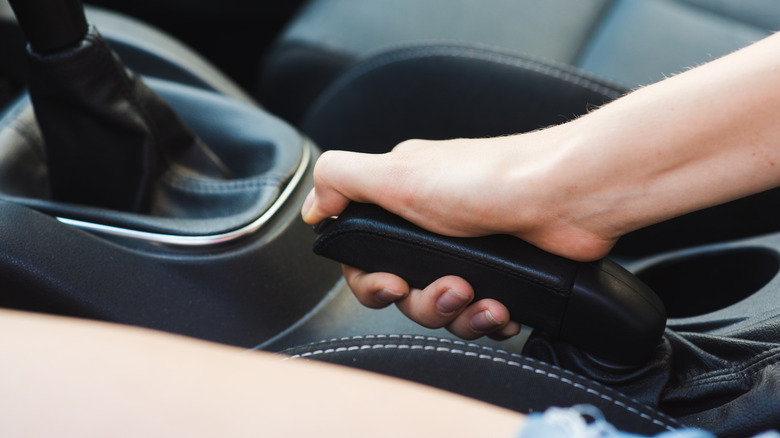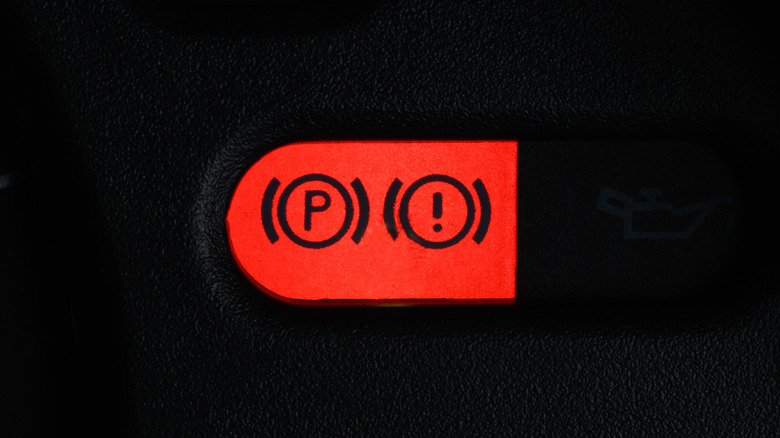How Parking Brakes Work (And Why They're Also Called Emergency Brakes)
Modern vehicles tend to come equipped with more technologically advanced safety features than some owners are even aware of. While many of those systems can be pricey to repair when they malfunction, few would likely argue that some of the more notable modern safety features aren't worth the extra money.
There are, however, a few more tried and true safety options that don't really need many modern upgrades to be effective, and that includes the good old Parking Brake, also referred to as the Emergency Brake. Whatever you call it, the function is one and the same — to ensure that a vehicle is incapable of rolling away when it is stationary or parked on a hill. Whether you're a new driver or one who's been on the road for several years, it is probable that you already know what Parking Brakes are designed to do. But it's equally probable that you don't know how they work.
As it is, the function is the same whether your vehicle's system is engaged via push button, foot pedal, or a more traditional hand lever between the driver and passenger seats. But the system is completely different from the vehicle's primary hydraulic braking system. The Parking Brake does not even function using hydraulics; instead, it engages steel cables that are connected to the vehicle's drum brakes. When engaged, those cables are intended to apply adequate force to prevent the vehicle's wheels from moving.
Yes, the term Emergency Brakes is pretty self-explanatory
We should note that the function is slightly different if your vehicle is equipped with disc brakes. In those cars, when the Parking Brake is engaged, it activates a corkscrew mechanism that pushes the piston into the brake pads to secure the vehicle. Despite the functional difference, there doesn't appear to be any advantage to one style of Parking Brake or the other, assuming it is properly engaged whenever you park your vehicle. In case there were any questions, the braking system can be utilized to stop a vehicle in the case of an emergency, hence the reason it is sometimes referred to as the Emergency Brake.
As far as emergencies go, few could frighten a driver quite as much as the failure of the vehicle's hydraulic braking system while the vehicle is in motion, or when you've pulled to stop on an incline. Though it might seem an unlikely event, the possibility of such a dangerous occurrence is the very reason that the vehicle's Parking/Emergency Brakes are set up with no connection to its primary braking system. And yes, if you find yourself on the road in a car, truck, or SUV experiencing brake failure, engaging the Parking/Emergency Brakes may be the only way to stop the vehicle and prevent a potentially costly or dangerous collision.
Whichever style of Parking/Emergency Brakes your vehicle has, the point is that it can bypass the primary braking system to stop a car when necessary. Interestingly enough, it can also help preserve your transmission when engaged prior to shifting gears into Park.

